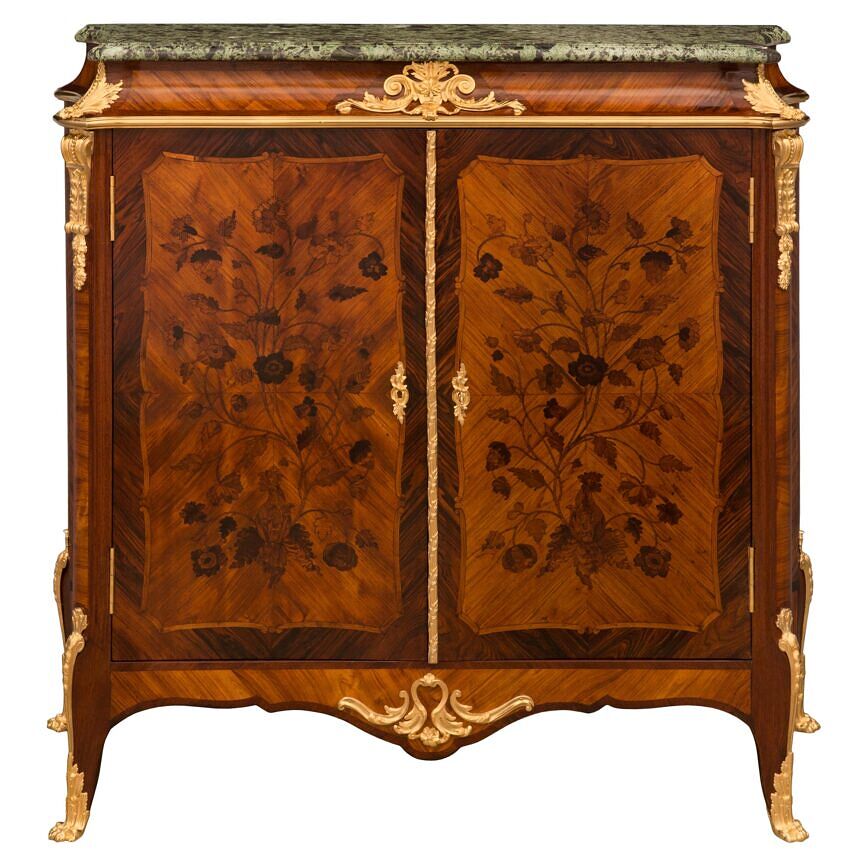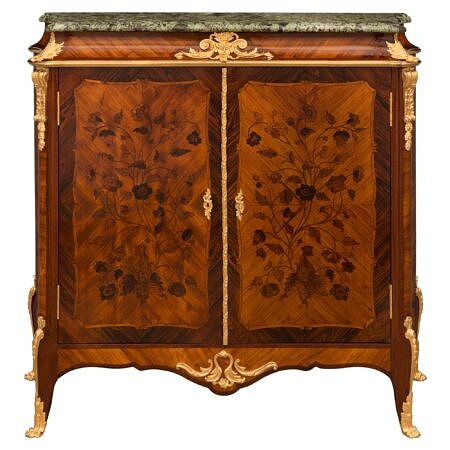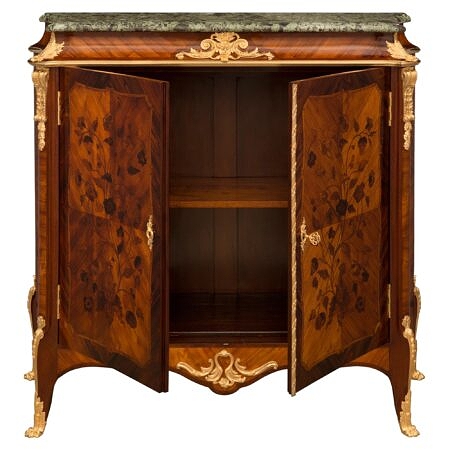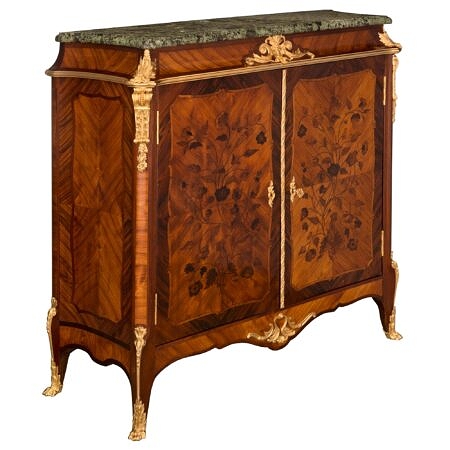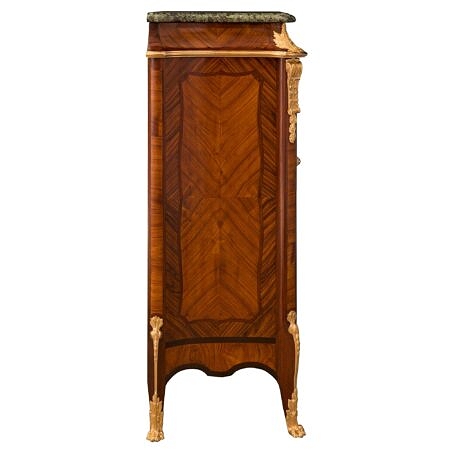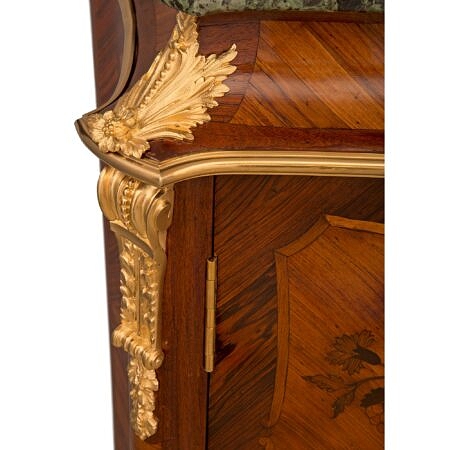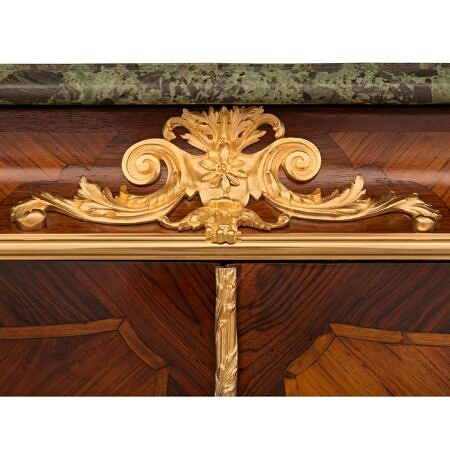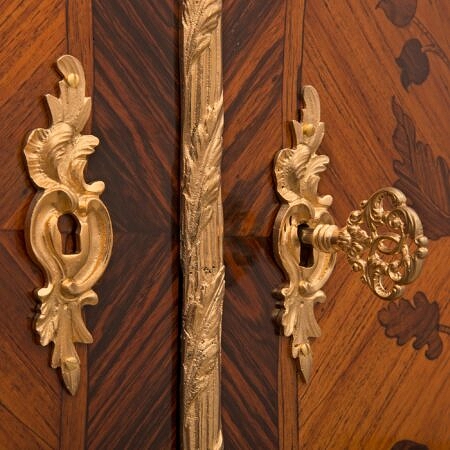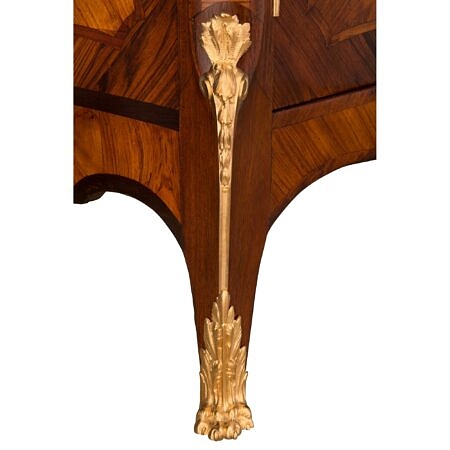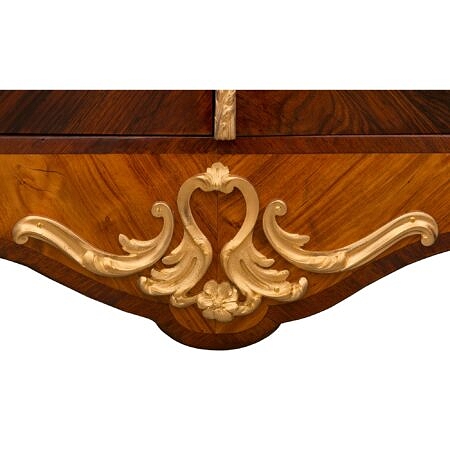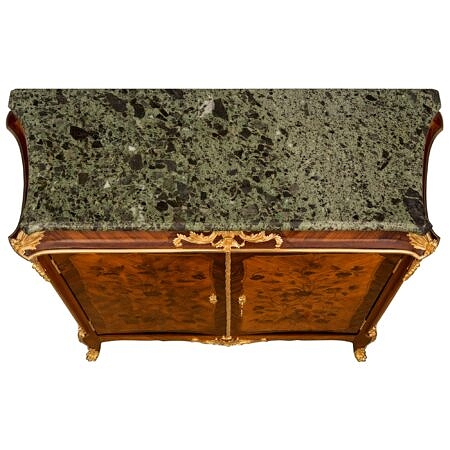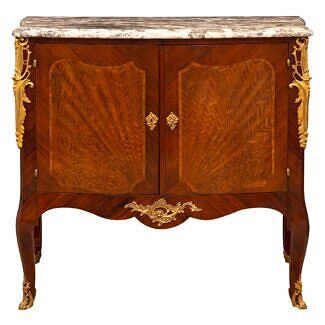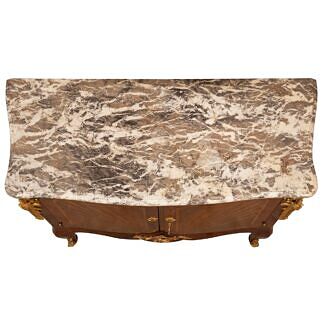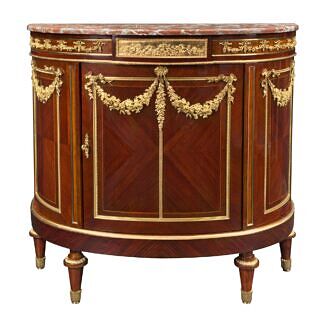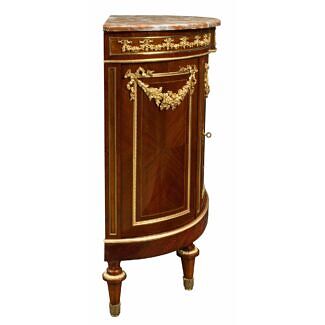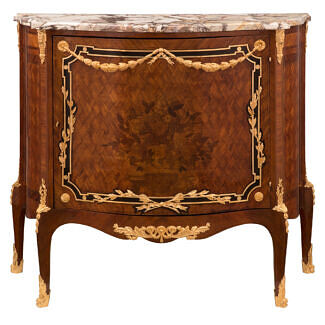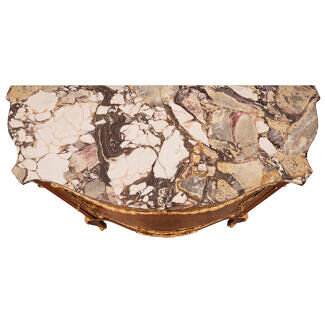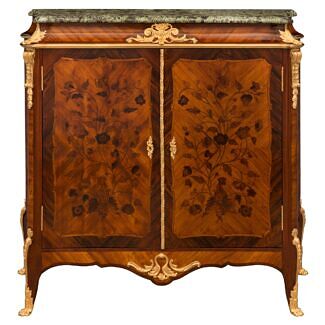A French 19th century Transitional st. Belle Époque period Rosewood, Tulipwood, ormolu and Vert Antique marble cabinet
List: $26,800.00
A most elegant and very high quality French 19th century Transitional st. Belle Époque period Rosewood, Tulipwood, ormolu, and Vert Antique marble cabinet. The two door cabinet is raised by lovely cabriole legs with fitted richly chased paw feet and... — Read More
A most elegant and very high quality French 19th century Transitional st. Belle Époque period Rosewood, Tulipwood, ormolu, and Vert Antique marble cabinet. The two door cabinet is raised by lovely cabriole legs with fitted richly chased paw feet and acanthus leaf sabots with fine chutes and foliate corner mounts. The doors display a stunning wonderfully executed array of finely detailed foliate marquetry of charming blooming flowers with foliate ormolu keyholes and a fluted branch like design at the center wrapped with fine intertwining leaves. The doors open to reveal the finished quarter veneered inside and all the original hardware with the superb top to bottom lock and one shelf. The sides also display a most decorative quarter veneered panel and elegantly curved movements with richly chased foliate corner mounts and a central scrolled ormolu reserve. Above is the original Vert Antique marble top with a fine mottled border and beautiful shape. — Read Less
- Item # 12331
-
H: 45.25 in L: 47.75 in D: 17.75 in
H: 115 cm L: 121 cm D: 45 cm
- France
- 19th Century
- Marble/Stone, Ormolu, Rosewood, Tulipwood
- Belle Époque Read More, Transitional st. Read More
Related products
-
# 2332A - H: 41" L: 43" D: 18"
-
# 9585 - H: 44" L: 46" D: 19"
-
# 4017 - H: 46" L: 52" D: 20"



